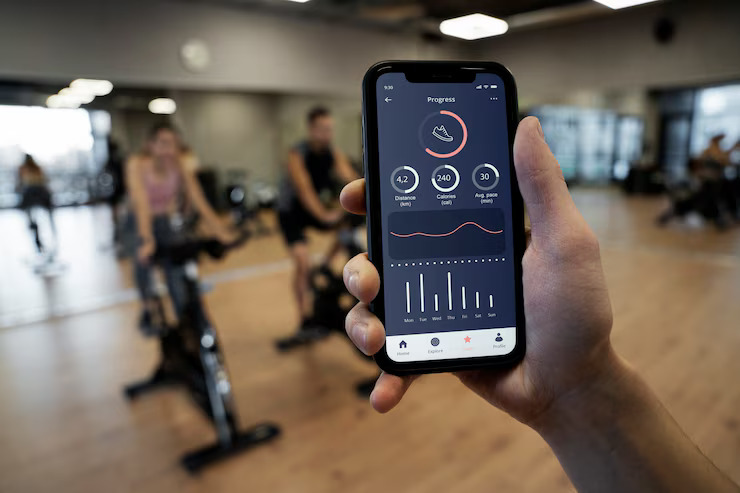How do you decide what you're going to offer in your studio each month? Do you wing it? Or do you pull up a plan that lays out your specials, events, and marketing that will make the most of your month and bring in revenue? If your answer leans more toward the wait-and-see approach than a pre-curated plan, you need a 12-month studio calendar. It may seem like a daunting undertaking, but your entire year's program shouldn't take you more than 90 minutes if you have the right tools. In fact, a 12-month calendar isn't giving you more work at all. By dedicating an hour and a half at the beginning of your year, you'll save yourself time and stress in last-minute scrambling each month. Sound achievable? Let's break it down.
What is it?
Your 12-month calendar presents everything your studio will offer and how you're going to market it to both existing clients and the public each month of the year- even better if you can plot it out by week. Think about the events or workshops you run, the sales or specials you offer, the themes you teach in class, and any additional studio programming you have or could present to your clients. Now strategically plan how you'll share all of those programs with your existing and potential clients across your various marketing channels. Complete those two main objectives, and you already have the framework of your calendar.
Why should I have one?
The list of reasons to have a calendar is long, but, to start with, an effective 12-month calendar allows you to pause and proactively design your studio's entire year in just an hour. Think of it as a step-by-step roadmap to your studio's vision board coming true. Have you ever realized you didn't have a plan for a significant holiday a week or two before the date? Have you had to cancel an event because you lacked the marketing to support it? By spending a little time strategically designing your clients' experience once a year, you get to be in charge of your studio's future rather than reacting to what the year throws at you.
Great! You're convinced. Now what?

1. Start with the goal.
What do you want to achieve this year? Do you want new clients in the door? Your calendar should look different than a studio owner who wants to focus on long-term client retention. The first calendar will feature open houses, community partnerships, and event marketing, while the latter will focus on member events, workshops, and themed classes. Both should include referral programs and bring a friend week. By starting with your goal, you are setting the intention for your year and can support that with your specific programming. That being said, a goal without a strategy is just a wish. If you want to see progress, you'll need to set goals and then plan how you're going to achieve them. That's where the marketing component of your 12-month calendar comes in.
2. Create your framework.
Open up a new spreadsheet document or find a blank piece of paper and split it into 12 months. We'll take a birds' eye view of the specials, events, holidays, and themes for the entire year by deciding what you'll feature each month. Better yet, save time and let our coaches do the work for you by downloading a ready-to-go free 12-month calendar here.
fitDEGREE can support your Studio Fitness
3. Audit your previous years.
Once you have your goal set, pull your sales and attendance report history from your point of sale software. What months do you usually make the most money? What months have the lowest attendance? If your goal is member-based, choose that report and add a column to your 12-month overview (If you're using the linked calendar, it's already there for you). Now, rank your months from 1-12 based on your chosen metric. For example, if my goal is to end the year with 200 members, I'll pull my member report by month and write "1" next to the month that had the most new members join my studio. Below that 1, jot down any events or specials you ran the previous year that could have contributed to those gains. By the time you're finished, you should see a summary of your membership growth by month, along with offerings you've previously held. If you choose a revenue-based goal, you'll complete the same process using your sales by month report.

4. Learn from the past.
If you always do the same thing, you'll usually get the same results, which may be acceptable. For instance, if you know your Christmas in July sale brings in thousands of dollars in revenue, pencil it in for this year's 12-month plan. But if you've been running the same Black Friday sale for the last five years and you've noticed a downward trend, it's time to try something new. On the first page of your calendar, you'll now fill in the following by month:
- Sales & Specials
- Events
- Holidays
- Themes
If one of those categories doesn't work for your particular studio, feel free to change it to something more applicable.
Pay special attention to the rank of each month. For example, If November is in 12th place on your goal rankings, you have two options. Either brainstorm exciting specials and events to bring new people in or decrease your operating costs that month to compensate. For example, sticking with the hypothetical goal of 200 members and the fact that November is one of your lowest months, your calendar might look like the following:

Examples:
Looking for examples to get your creativity flowing? Here’s January and February examples:
January
Promotions:
- New Year reset- anyone without an active pass can “be new” and sign up for an intro offer, even if they’ve already used one in the past
- Buy 12 month membership, get 13th month free
Events:
- 40 classes in 60 days lifestyle change challenge that runs mid January to mid March
- Vision boarding or goal setting member workshop
- New Client Open House
Holidays:
- Special New Year’s Eve 60 min advanced cycling class
- Closed New Year’s Day
Themed Class:
- Bring your workout buddy free buddy bootcamp special class
- Intention setting yoga class
February
Promotions:
- Share the love-
- a. gift a friend an intro special
- b. Review challenge to collect Google reviews
Events:
- Galentines class on Feb. 14th with chocolates and bubbles afterward
Holidays:
- No evening classes on Valentines except the Galentine class
- Presidents Day Feb 21- condensed schedule
Themed Classes:
- Partner yoga on 2.15
5. Get organized
Once you’ve mapped out your year on your calendar, create a google folder (or an actual folder if you’re more of an analog type) and add 12 sub-folders. Each time you create a marketing creative from a flyer that gets printed to the copy you’ll schedule on your Instagram, drop it in the appropriate folder. Aim to complete the next month’s or {bonus points} quarter’s marketing material in the previous time-period so that you’re not back in that last minute feedback loop. Next year when you do your 12-month exercise, you’ll be able to go to your folders and transfer, edit, or delete the previous year’s material without having to start from scratch. Work smarter, not harder!
6. Spread the word
Have you ever worked tirelessly on an event only to have two people sign up? Most likely, your marketing plan let you down. Once you have your events mapped out on your 12-month spreadsheet, it's time to take it a step further. For each event or special offering, you'll look at when and how you'll market it to the public and your existing clientele from multiple avenues, including:
- Digital
- Facebook ads
- Facebook and Instagram live
- Organic posting on your stories and reels
- Google ads
- Google my business posts
- Email Marketing
- Local partners or collaborations
- Print ads
- Website updates
- In-studio signage and announcements
and more- this isn't an exhaustive list!
As you build out your marketing plan, you can make sure that you have a robust strategy that goes beyond boosting a few posts or putting up a flyer in your studio. Studios that advertise events for at least six weeks in multiple channels have higher attendance than those who use a shorter timeline, so step out of your comfort zone and try to fill your entire marketing plan spreadsheet from top to bottom.
7. Put someone in charge.
Unless you're a 100% solo operation, you likely have someone in your corner that you can lean on for certain tasks. Entrepreneurship doesn't have to be a one-person show. Once you've completed your calendar from a monthly and weekly viewpoint, take a step back and think, "who can I delegate this to?" It can be as big as training a staff member how to run an event to asking your teachers who wants to teach the partners yoga class on Valentine's day. Look for opportunities to ask your support staff to step up and take ownership and then write their name next to the event on your calendar. You may need to manage the employee and monitor their progress, but you shouldn't need to run the whole show.
That's it! Imagine a year where you simply pull up your curated schedule each month and then follow the plan you've already intentionally designed. No more throwing together last-minute events or relying on the same-old sales you do every year. Plus, everyone on your team knows what exactly they are responsible for delivering. Proactive studio ownership could be the difference between the status quo and achieving your goals. Remember to download your 12-month calendar here and set 90 minutes aside either by yourself or with a staff member. Best of luck as you create your intentional studio year.













.jpg)












.jpg)










.jpg)










































.jpg)





























